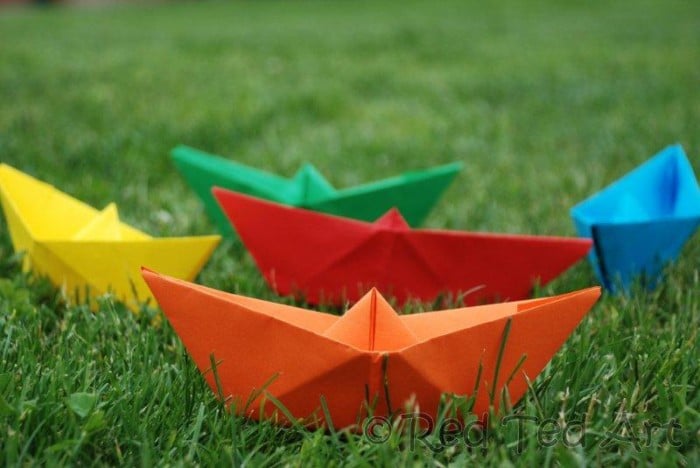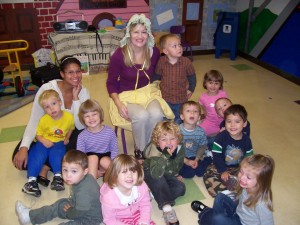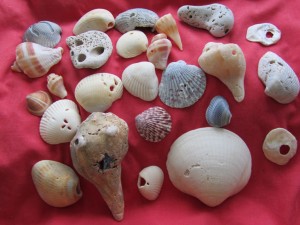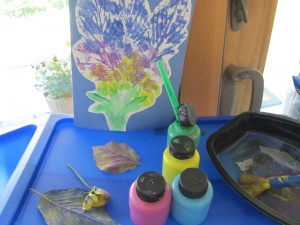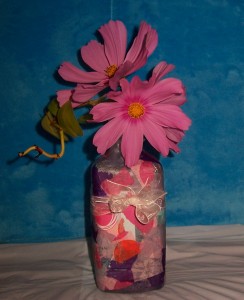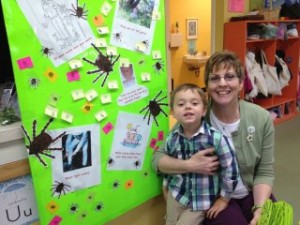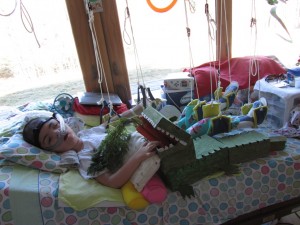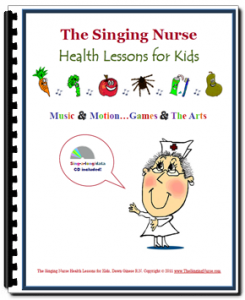Tired of the same old, same old? Super-size it and make the same old a brand new experience loaded with SUPER SIZED learning!
With a little imagination and cleverness, you can super-size almost any learning opportunity you currently provide young children.
WHY would you want to SUPER SIZE learning?
Take a look at the following picture:
What happens naturally when children are presented with something SUPER SIZED?
1) They need to problem solve
2) They need to determine what they need, then ask for it. (whether it be people or tools to help them out)
3) They need to use more muscles.
4) They need to coordinate their bodies.
5) They need to collaborate with others.
6) They need to strategize.
7) They feel empowered!!
That's just a few of the benefits super sizing play (aka: learning) provides! This blog has some of the successful ways I have super-sized play and thus, the learning that goes along with it. Feel free to use these ideas, then put on your own thinking caps and clever pants and see what normal, everyday play opportunities you can supersize for super sized learning in your programs!!
Super Sized Marble Painting
All you need is a large, sturdy box (this is a treadmill box and it's HEAVY), large paper, paint and a variety of balls to supersize the typical marble painting!
 |
| Look at the focus, the teamwork, the muscles and coordination!! This picture is at the beginning of the process, where the children are using trial and error to figure out how this is going to work. |
 |
| Further into the process, they have learned that standing up helps with lifting the very heavy box. They have also named themselves "Parkers Side" and "Ty's Side" in order to coordinate the movement of the balls. |
 |
| Through the process of trial and error and cause and effect, it was discovered that the box could be tilted this direction too. It was also determined that we needed more paint (FIrst determining, then asking for what you need is a valuable life-long skill). |
Super Sized Playdough
Make at least 3 batches of homemade playdough..step back and watch out for super-sized learning!! I have used anywhere from 3-8 batches at a time! Plop the playdough onto the center of the table in ONE LARGE MOUND. Stand back, and let the children take the lead from here!
For extra fun, hide special items inside the playdough! Our favorites? "
Monster Playdough" (only, I never told them it was monster playdough..they took what they found and created monsters out of it!!) "
Treasure Playdough" (jewels and necklaces) and "Creepy Crawly Playdough" (plastic and rubber bugs!!) (for pictures of this playdough...go to my Facebook page, "Play Counts"!) and "Snowman playdough" (buttons, small wooden dowel pieces painted orange).
Keep in mind, when plopping a "theme" playdough...do NOT, I repeat do NOT lead the children -- follow them!!! They may not see what you see in the playdough and THAT'S OKAY!!! For example...the snowman playdough actually became "birthday cake" playdough! They used the "carrot noses" for candles!! :)
 |
Strategize
It takes more then just fingers to manipulate a large mound of playdough. Lindsey has found it necessary to use her entire arm in order to create enough pressure to smash the playdough down! |
 |
Cleverness
Have you ever seen a child manipulate a small batch of playdough with both of their ARMS?! I don't think so! |
 |
Pride
Little Trillian is feeling mighty fine about himself as he cuts through this massive, and challenging mound of playdough! Look at him working those all-important gripping muscles!! |
 |
Practicing Social Skills
This super sized mound of playdough has pirate treasure hidden inside. Super-sizing playdough gives the children the opportunity to share, cooperate, imagine, compromise, use more muscles in different ways and is just plain FUN!! |
Super Sized Puzzles
Floor tiles found at Sam's Club make an AWESOME super-sized puzzle!
 |
Using Big Muscles is Empowering
The fact that the puzzle piece is BIGGER then Erik is and HE IS STRONG ENOUGH TO HOLD IT!! This is extremely empowering for a young child. |
 |
Determination and Persistance
Little fingers have to work harder to manipulate large pieces. Determination and persistance are big players when the going gets tough! It didn't take long before an older child came to the rescue to assist this younger child with properly connecting the puzzle pieces. Older children filling the role as leader and helper is very empowering for them. |
 |
| Teamwork....enough said. |
 |
Super-sized Imaginations!
As if staying on the path, safe from hot lava wasn't difficult enough...then the children added SNAKES to the challenge!
|
 |
Creative Ideas!
This was the third day of super-sized puzzle play. Can you guess what they have made?! A great, big, huge game of Candyland!! A grand example of children leading their learning. There is number recognition, one-to-one coorelation, large motor skills, children taking on leadership roles, pride in ownership (this was entirely their idea...I had ZERO to do with this...I am just the photographer) |
 |
Inventive Minds
Bergen was the first to take the puzzle pieces and build UP with them. Very clever, very outside-the-box, and very impressive! This became a present game, and then a giant jack-in-the-box (ironically, that IS Jack in the box!!) |
Super Sized Ramps
Read more about how this super-sized play evolved at my blog,
www.playcountsdenitadinger.blogspot.com . You will find it under the category, "ramps".
Think outside the box for some SUPER SIZED ramp fun!
 |
Think Outside the Box
When the children were telling me what they knew about ramps, one said "Hey! My nose is a ramp, Nita!". Another child quickly added to that by holding onto her long hair declaring it was a ramp too! This made me think outside the box for some super fun, super-sized indoor ramp fun!! Read more about this, and see more pics by clicking HERE. |
 |
Trial and Error
Setting up a super-sized ramp like the one above involves lots of trial and error, lots of problem solving (see the stack of containers to get the ramps exactlyl the right height and angle?) |
 |
Hidden Learning
The children, on their own started recycling the water...quickly catching it at the bottom of the ramp and returning it to the giant tub of water. The balls got tossed in for fun as they watched them travel down the ramp. They learned the balls traveled faster with water poured after them. |
 |
Ramp Painting
These PERFECT cardboard ramps were discovered during a dumpster diving expedition to our local appliance store, and yes, that is the treadmill box once again! Add some bowls of paint and ramps and you have a great opportunity for super sized learning! The children loved to adjust the ramps to get the results they wanted. |
 |
Compromising
Ella and Ty are debating the angle of the ramp. Ella wanted her ball to make a bouncing trail, while Ty wanted his to run smoothly across the paper. |
 |
Organizing Bodies and Minds
Super-sized play requires organization of thoughts and materials. I love how Avery is using her entire body in order to carry more balls. She obviously cares a great deal about staying clean (sarcasm here folks) |
Super Sized Goop
If it's fun in smaller quantities...then it's over the top GRAND when you super-size it!! Take goop for example! This simple cornstarch and water mixture is a hit...especially when feet can get involved too! A simple dip in water cleans it right off!
 |
| Yes please! Plenty of goop and space for free exploration! |
 |
Self Motivation
I love to observe children organizing themselves. I had nothing to do with this line. Look at them patiently waiting their turn! They are motivated by the fun and the fact that they own this adventure....and their feet LOVE it! Notice the purple bucket? That is the default washing bucket. It is present whenever something is messy. This gives sensitive children a safety net knowing that the ick can be erased immediately. |
 |
| Sharing |
 |
FEELS GOOD!
No explanation needed. Clearly, she is LOVING the opportunity to be IN goop! Super sized play provides super sized sensory experiences that awaken the senses and gets brains thinking of endless possibilities! |
There you have it...a small list to get the juices flowing. Now,...go put on your thinking caps and creative pants and see what fun play opportunities you can
SUPER SIZE for
SUPER SIZE LEARNING!!
Author's Note: It is always a pleasure to share the wonderful cleverness of my young crew! All of the ideas you just saw began with a simple "plop" (click
here for an explanation of a "plop"), then the children in my program led the rest of the way! If you liked what you just read, check out my blog for more!!
www.playcountsdenitadinger.blogspot.com
See you next time!!
-Denita Dinger
Professional Brain Developer and Defender of Play
I speak ENTHUSIASTICALLY FOR PLAY!!! Contact me for more information about the topics I present!!
www.playcounts.com
steelerfan.dd@gmail.com
 The current education system favors strengths of girls versus boys. Girls are more equipped to sit still for long periods of time, pay attention, talk, read, and write.
The current education system favors strengths of girls versus boys. Girls are more equipped to sit still for long periods of time, pay attention, talk, read, and write.



































